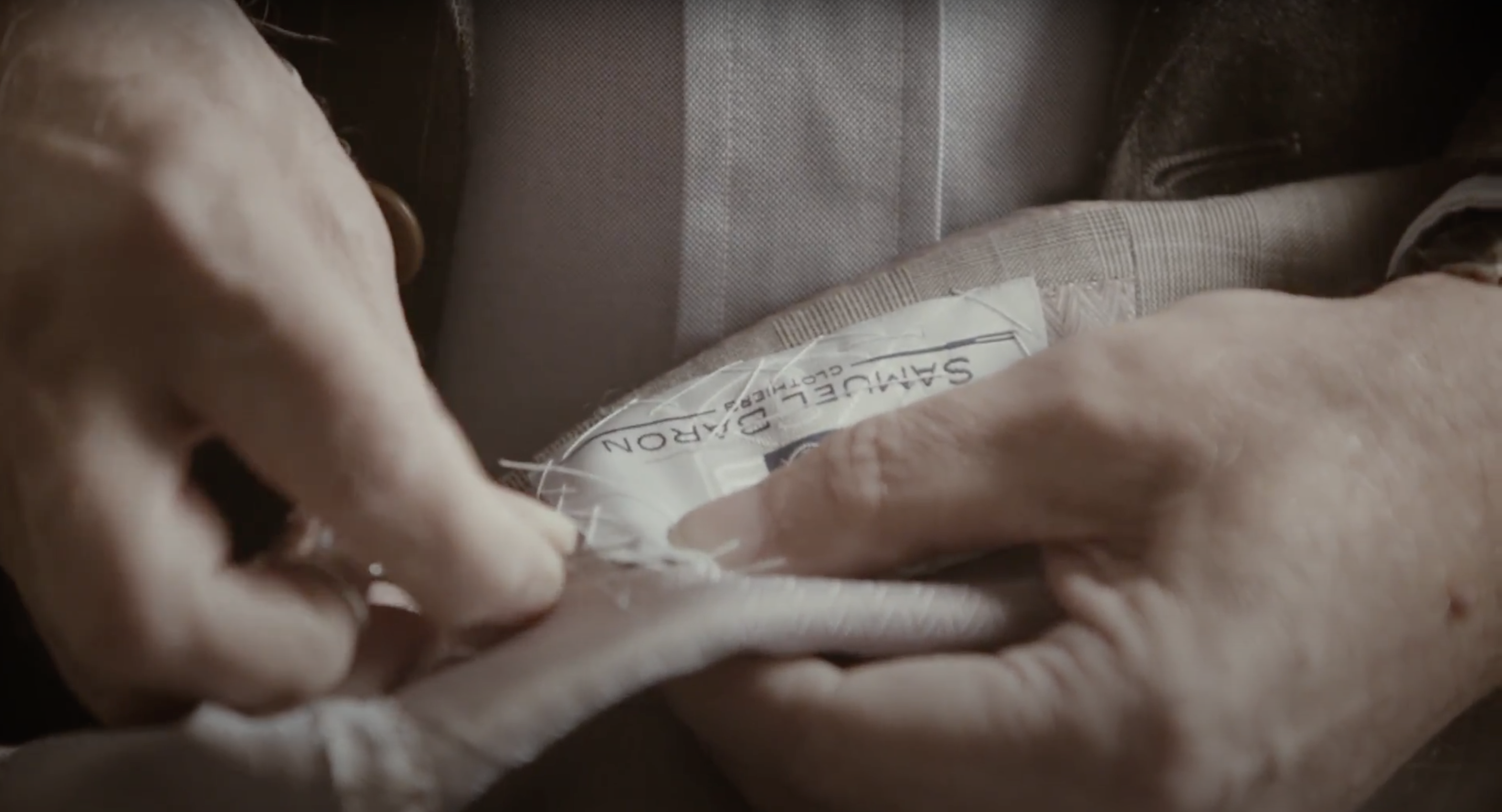
Types of Fabric Weaves
When selecting fabric for a shirt or suit, you may already have a favorite type of weave that you always gravitate towards. I myself am partial to twills, but there are many great options to choose from when creating a custom piece. We want to give you some insight into some of the most common suiting fabric weaves, and maybe inspire you to try something different next time you’re selecting from one of our fabric books. But before we get started on the weaves themselves, I’d like to go over a few terms used when referring to how fabric is made:
Warp: the lengthwise or longitudinal yarns of a fabric; it is generally held taut and stationary during the weaving process
Weft/Filling/Woof: the horizontal or latitudinal yarns in a woven fabric; it alternates between passing over and under the warp yarn
Selvage: finished edges that run lengthwise and avoid raveling
Pile: the raised surface of a fabric created with looped or cut yarn; common fabrics with a pile include corduroy, plush, and velvet
Wale: the diagonal pattern of a twill weave
Float: the part of the weft that crosses over two or more warp yarns in a twill weave
Harness: shafts on a loom that hold the warp threads
Loom: apparatus used for weaving fabric
Now that we have the vocabulary down, let’s jump into the fabric weaves themselves, starting with the ubiquitous plain weave.
Plain Weave
The plain weave is the most common and the most simple of fabric weaves. Also called tabby weave, the plain weave is made by alternating the weft yarns over and under the warp yarns. The warp and weft are the same weight and material, and are woven in a 1:1 ratio. It can be prone to wrinkling depending on the type of yarn and is used for creating textiles like chiffon and some flannels in addition to suiting.
Twill
Twill is created by weaving the weft thread over more than one warp thread and then under one thread (or vice versa), e.g., over three and then under one, thereby creating a wale. The harness of a twill refers to the total number of harnesses raised/lowered on the loom to create it. In a 3 Harness Twill, there would be a pattern of two over and then one under, shown sometimes as 2/1, for a total of three harnesses. In a 4 Harness twill, there would be a pattern on three over and 1 under, which would be shown as 3/1. A plain weave, of course, would be 1/1, and more complex twills can have different ratios to create more interesting patterns. Cavalry twill is a particularly durable subtype due to the use of worsted wool in its construction, making it ideal for sport (and battle).

Gabardine
In gabardine cloth, the warp is twice the density of the weft - that is, the vertical threads are spun twice as tightly as the horizontal ones - and the threads are woven like a twill, which in turn produces a diagonal pattern. They are woven together tightly to provide some level of waterproofing, added durability, and wrinkle resistance, making gabardine a great option for pieces like trousers and trench coats over a regular twill. This weave pattern also produces a bit of sheen, thus adding to its appeal. Because the weft is often entirely on the “back” of the fabric and largely unseen, a lower quality thread is sometimes used for it.
Hopsack
In essence a more open plain weave, hopsack is lightweight and considered more casual than other weaves. It is great for summer ensembles and layering due to its open structure and its resulting breathability when made with natural fibers such as cotton. Synthetic materials and full lining will counteract breathability so they should be avoided if the piece in question is intended for warm weather wear. Hopsack doesn’t wrinkle as easily as other weaves, so it is a good option for travel, especially considering that it can be paired with anything from a t-shirt to a button down depending on the occasion. However, this weave can be delicate, so it is important to think twice before using it for pants, which may be subjected to more wear than, say, a blazer.
Faille
Faille (pronounced like “file” or “faiye”, depending on how French you’re feeling) uses a crosswise rib weave, which is similar to a plain weave in its construction but has either a heavyweight warp or weft instead of yarns of equal weight. This difference in weight creates the appearance of either horizontal or vertical “ribs” in the fabric. “Crosswise” refers to the weft yarns, so in faille the ribs run latitudinally. It usually uses silk or cotton, has a lovely drape, and is lightly glossy, making it a good choice for formal settings. It can be difficult to clean so keep maintenance in mind when considering a faille suit. If you are looking for formal attire, this may not be an issue due to the infrequency of wear, however laundering could be an important factor when purchasing more casual garments.
Bengaline
Largely similar to faille in its use of a heavyweight weft, bengaline is distinct in its use of more varied types of yarn, whether a classic like silk, a modern synthetic, or both. The construction and yarn type adds to the stretch and durability of the fabric, making it ideal for clothing that needs a mixture of comfort and structure.
Sharkskin
This weave is characterized by its alternating dark and light colored threads which give the appearance of tiny diagonal lines in the fabric. This pattern gives the fabric the appearance of shark skin, hence the name. It is also called pick’n’pick. Sharkskin fabric is breathable, lightweight, moisture-wicking, and wrinkle resistant, making it an ideal choice for any season. As alluded to above, it has a slight sheen to it, making it appropriate for both business and formal occasions at any time of day.









